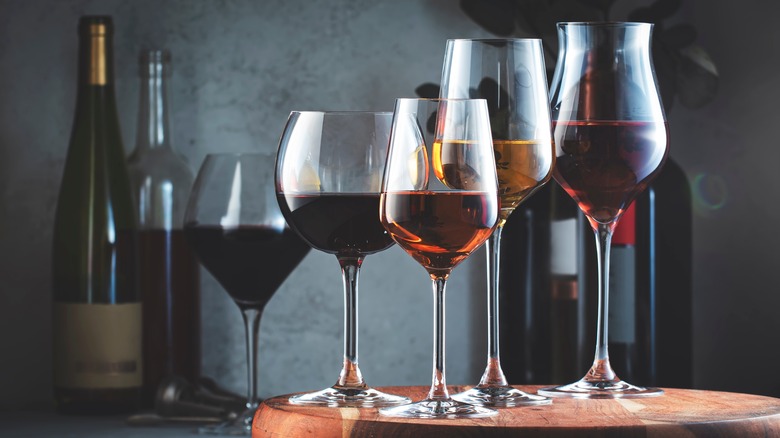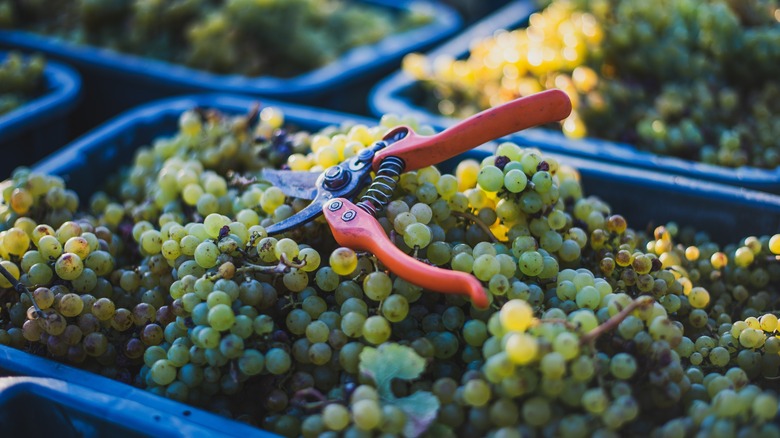How Chaptalization Elevates A Wine's Alcohol Content
The winemaking industry is an old one, and with any process that endures for hundreds or thousands of years, the specifics of its manufacturing tend to evolve. While it can be comforting to look at your favorite Riesling as simply a bottle of grape juice magically transformed by sitting in a barrel for a few years, the truth is that vintners pull all sorts of tricks to make sure your wine tastes good, and that it tastes just as good every year, regardless of external factors that might affect a particular harvest.
Cold northern winemaking regions like Alsace and Champagne in France face challenges in winemaking that their counterparts in sunny southern climates, like Argentina and Southern California, don't. In poor growing seasons, explains Grape Collective, colder regions might produce grapes that have not ripened sufficiently, resulting in a lower sugar content. WineMakerMag shares how a lack of sugar can result in a wine with a lower alcohol content, which is important not only when it comes to getting you tipsy, but also for creating the correct body and mouthfeel.
There is a process that even some of the world's best winemakers use to fix a wine that doesn't live up to the buzz, however, something of an open secret that would make any purist blush.
Chaptalization: A misunderstood, but necessary, process
Chaptalization, named for Napoleon's minister of the interior, Jean-Antoine Chaptal, is the process of spiking grape must with additional sugar during the fermentation process, which allows yeast to metabolize more sugar into alcohol and produce a stronger wine (per VinePair). The process is highly controversial, and usually only performed when winemakers need to reach a desired alcohol level that a certain year's harvest won't reach on its own. "You want to chaptalise as little as possible," says winemaker Liam Idzikowski from Lyme Bay Winery to Decanter. "When you add sugar you're diluting the wine, essentially, so for every kilogram of sugar you add, you get 0.66 litres of extra wine that hasn't got any flavour at all."
According to Wine Folly, while the process is common in cold northern winemaking regions (France, parts of Germany, Oregon, Canada, New Zealand, the United Kingdom, and New York), is it illegal in many other places (Argentina, Australia, Austria, California, Italy, Greece, Spain, Portugal, and South Africa). The European Union even tried, unsuccessfully, to ban the process altogether in 2007 (per The Guardian). When done in excess, chaptalization can result in an imbalanced, boozy product, but as Michel Niellon, owner of Domaine Niellon in Burgundy, said to Wine Spectator: "Everyone does it sometime. All the winemakers add sugar."

